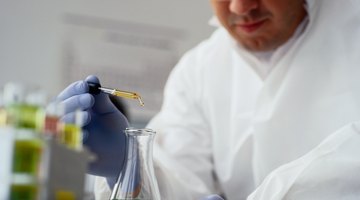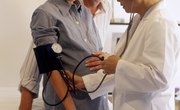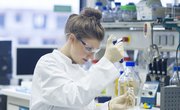Veterinarian technicians are people who assist veterinarians in handling animals. They provide professional support to veterinarians in many different work environments, including hospitals, clinics, veterinary schools, zoos, animal reserves and research laboratories. Students interested in pursuing this line of work complete associate degree programs in veterinary technology, which take about two years and lead to Associate of Applied Science degrees.
Associate Degree
Associate degrees in veterinary technology are offered by community colleges and some four-year colleges and universities. These programs require students to complete 50 to 72 credit hours of course work in different aspects of veterinary medicine, including anatomy and physiology, nursing procedures, clinical laboratory techniques, surgical preparation and assisting, phlebotomy and anesthesiology. Requirements vary widely across colleges, but many programs also require students to complete a number of prerequisites in biology and chemistry prior to taking foundational courses in veterinary technology.
Prerequisites: Biology and Chemistry
All veterinary technology programs require students to take a number of prerequisites in their first year in the program. These prerequisites lay the foundation for all future coursework and give students an introduction to the theoretical and laboratory demands of the field. In particular, many veterinary technology programs require students to take one or two semesters of general biology with laboratory sections, and one or two semesters of general chemistry with laboratory sections. Chemistry does not play a very large role in veterinary technology programs, but it is nevertheless an important prerequisite for courses such as anatomy and physiology.
General Chemistry 1
Chemistry is the study of the building blocks that make up the world around us. Community colleges and universities offer students a number of chemistry courses that are all based on the material covered in general chemistry 1. This course typically lasts one semester and covers topics such as the periodic table of elements, atoms, molecules, solids, liquids, gases and compounds. Many veterinary technology programs require students to take general chemistry 1 and the associated laboratory section. In the laboratory section students learn how to handle chemical compounds and solutions, and how to do basic laboratory work.
General Chemistry 2
Occasionally, veterinary technology programs also require students to take a second semester of general chemistry. This course builds on the material introduced in the first course and also comes with a laboratory section. General chemistry 2 typically covers topics such as acids and bases, and teaches students how to balance chemical reactions. Knowing how to balance chemical reactions is an important skill for advanced veterinary technology courses such as anatomy, physiology and pharmacology. The laboratory section associated with the course gives students additional experience in handling chemical compounds and laboratory equipment, and in writing up research results.
Related Articles
References
Writer Bio
Kate Prudchenko has been a writer and editor for five years, publishing peer-reviewed articles, essays, and book chapters in a variety of publications including Immersive Environments: Future Trends in Education and Contemporary Literary Review India. She has a BA and MS in Mathematics, MA in English/Writing, and is completing a PhD in Education.











